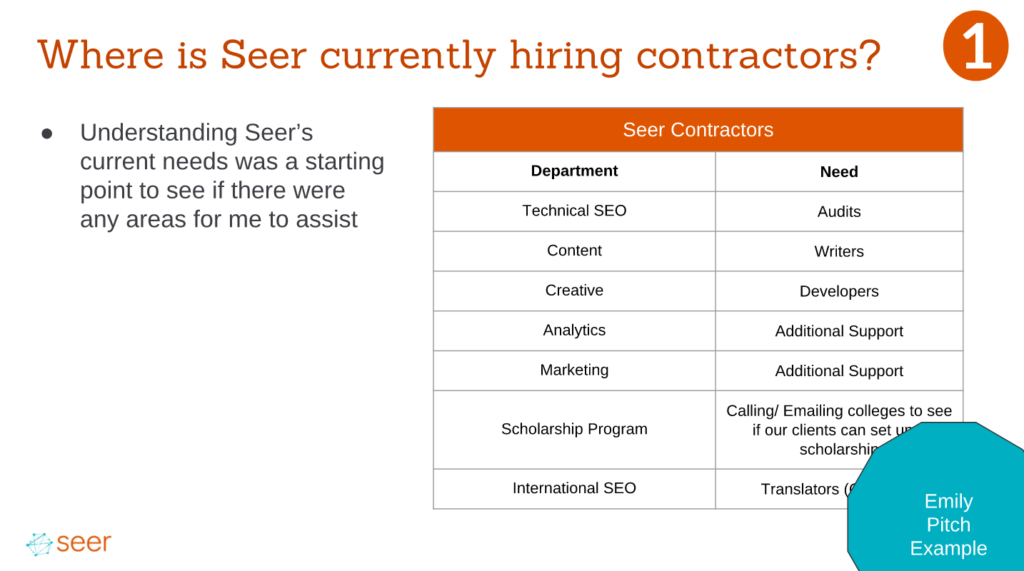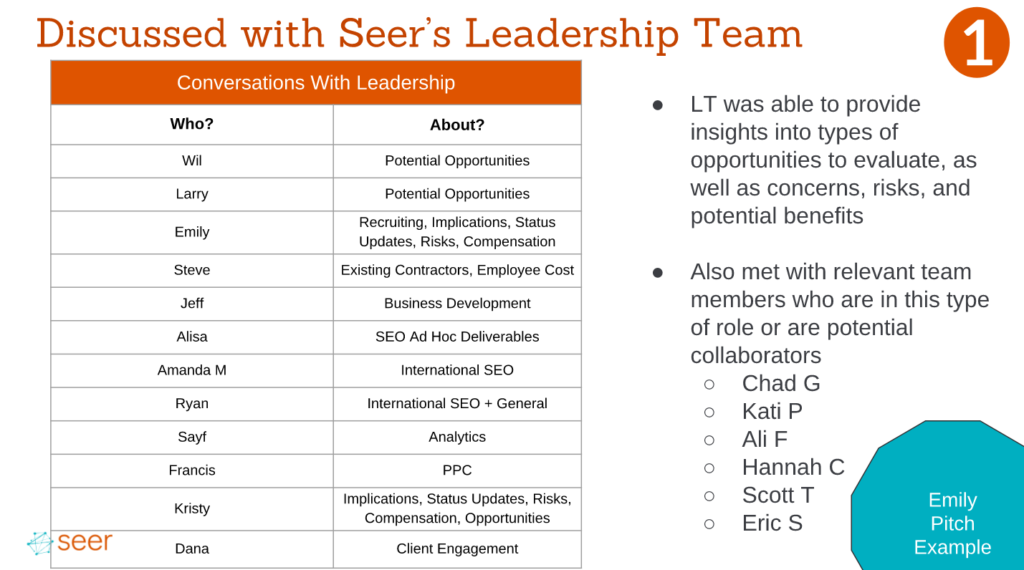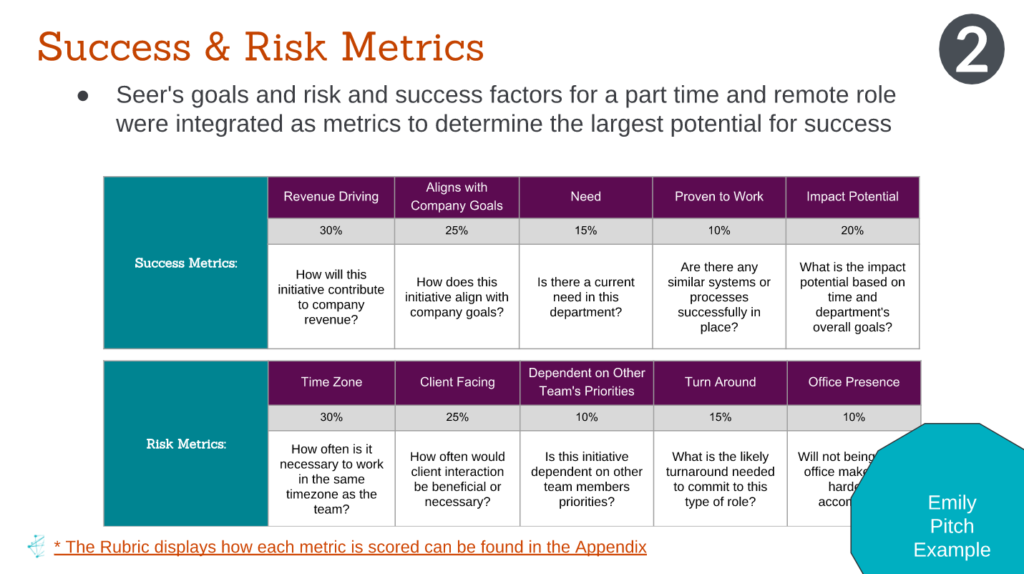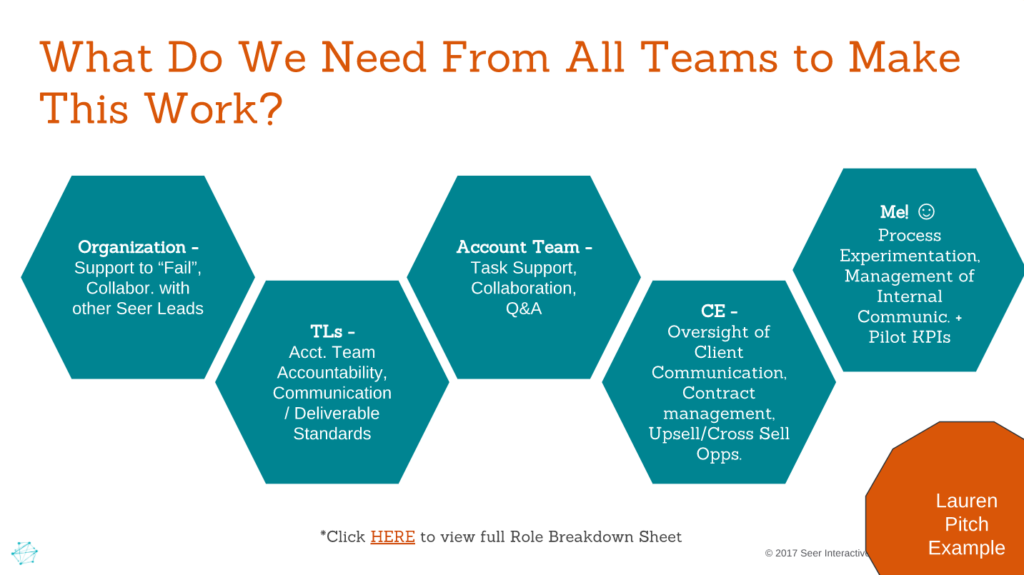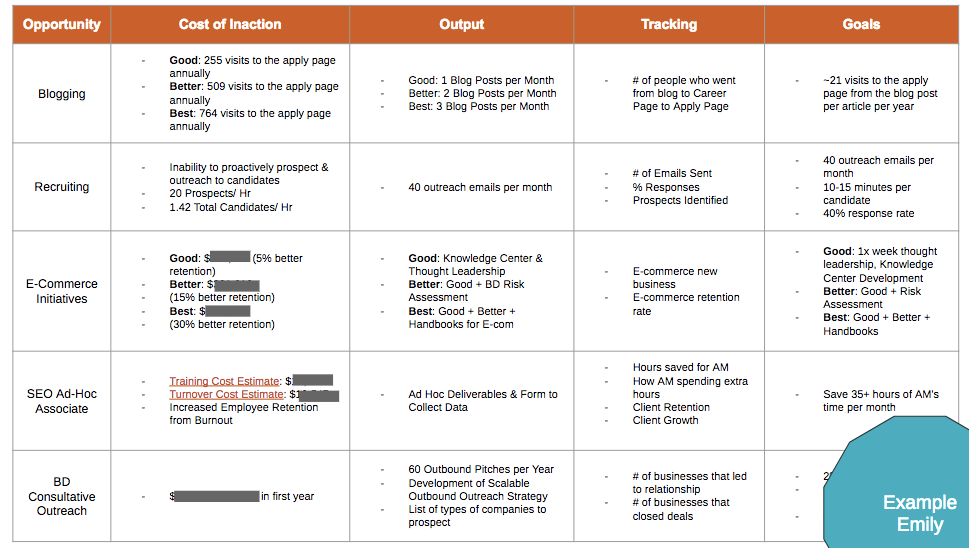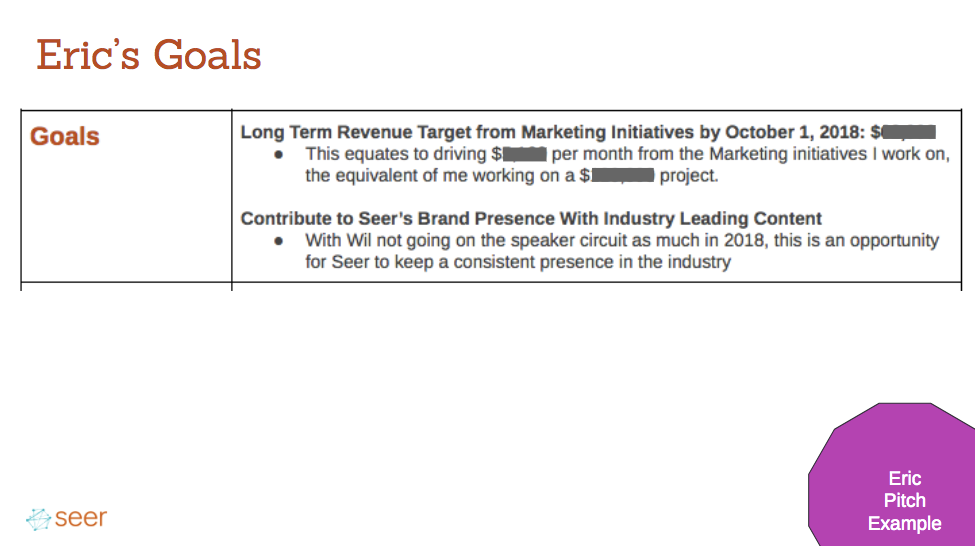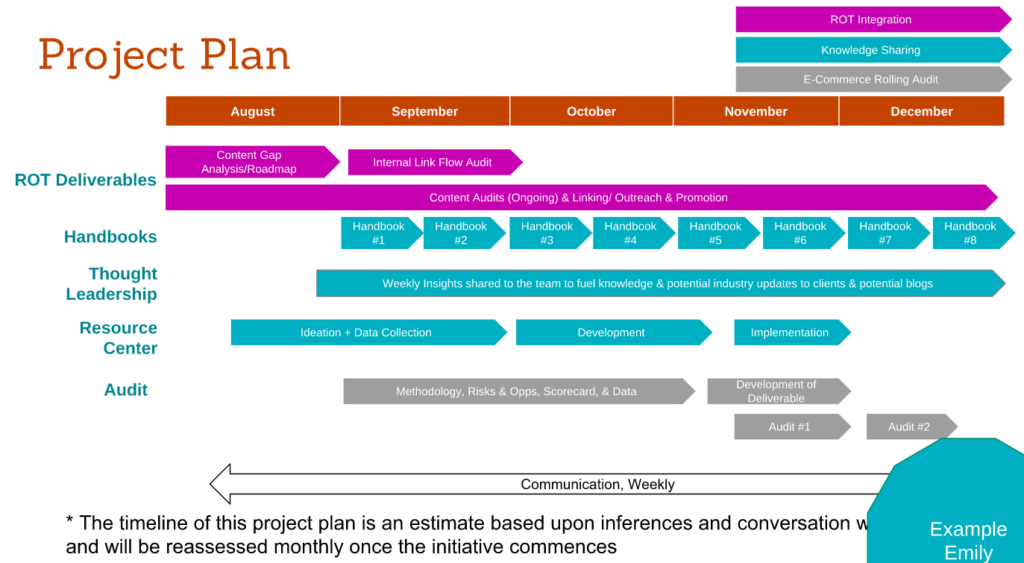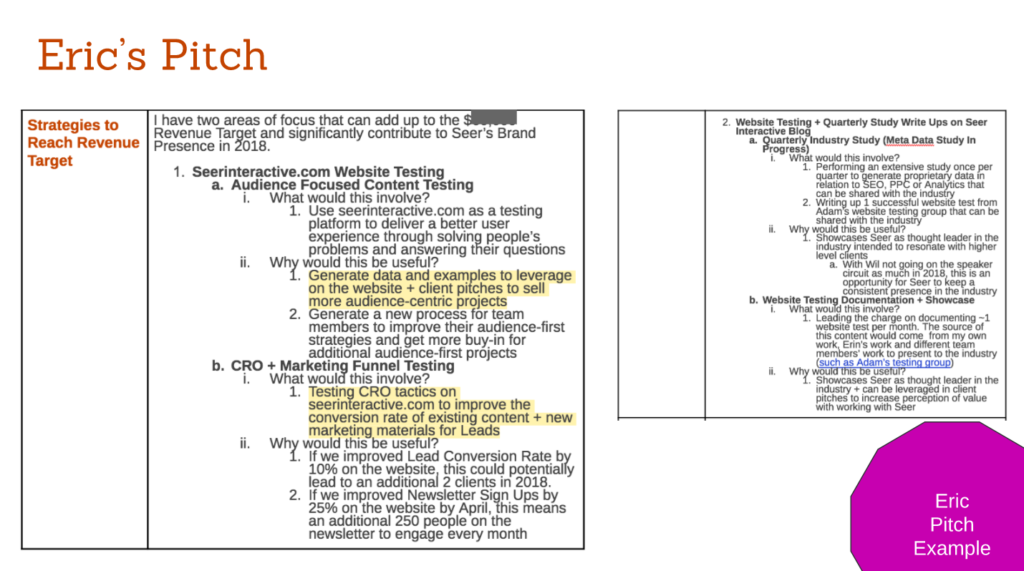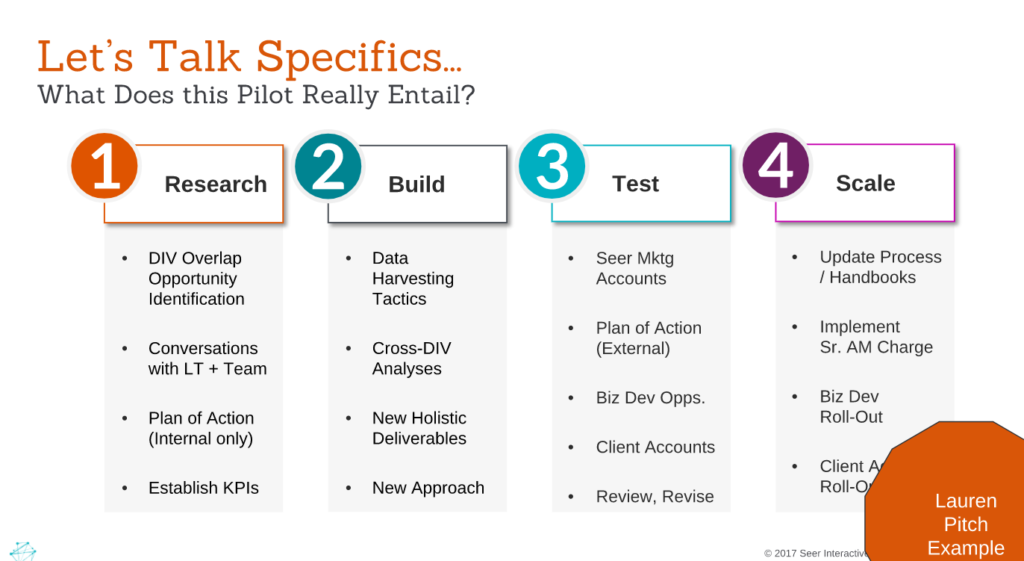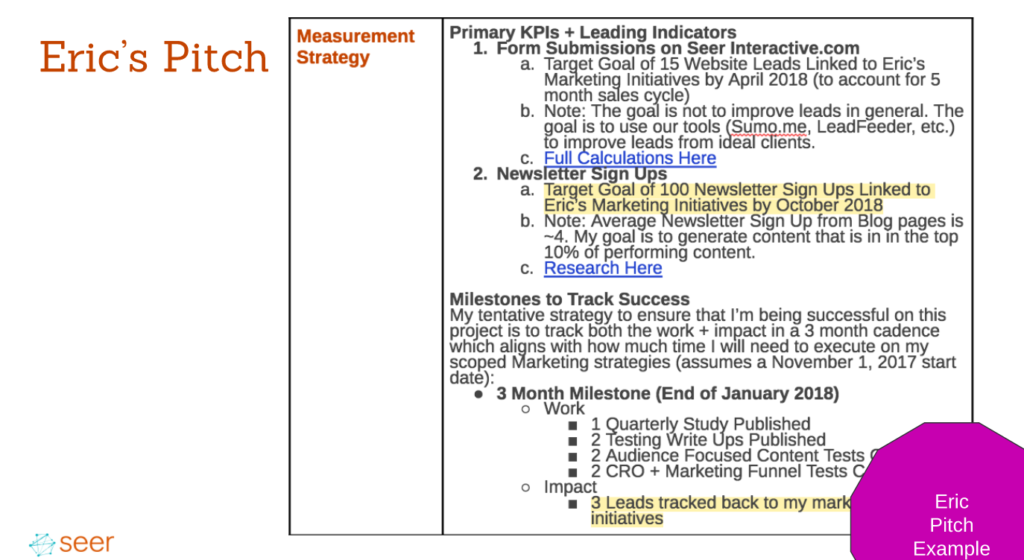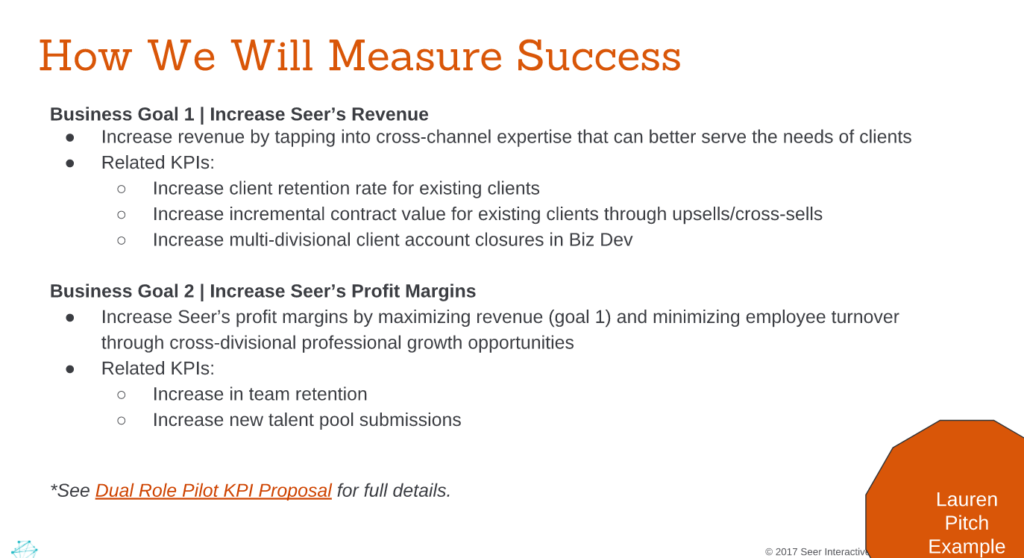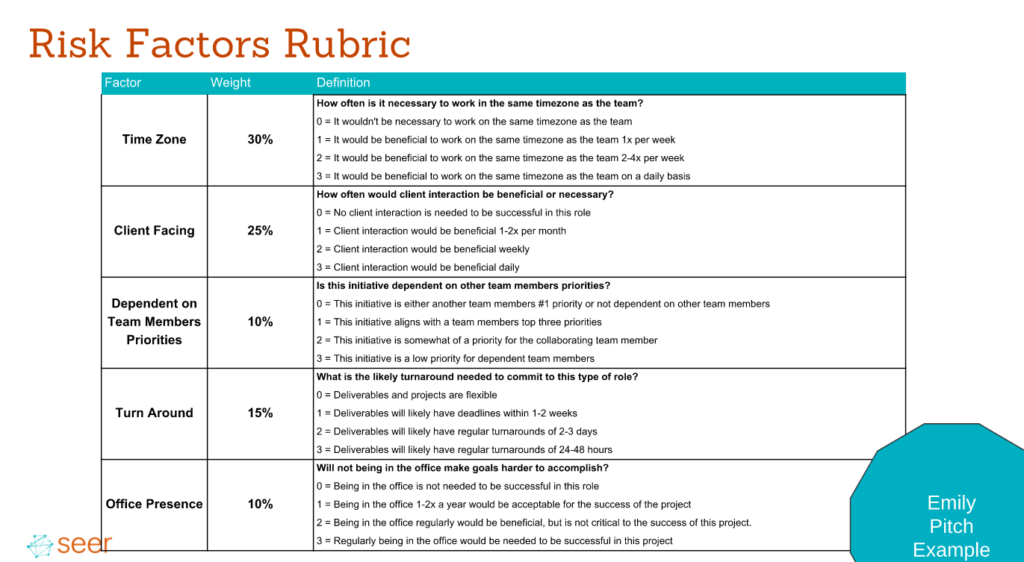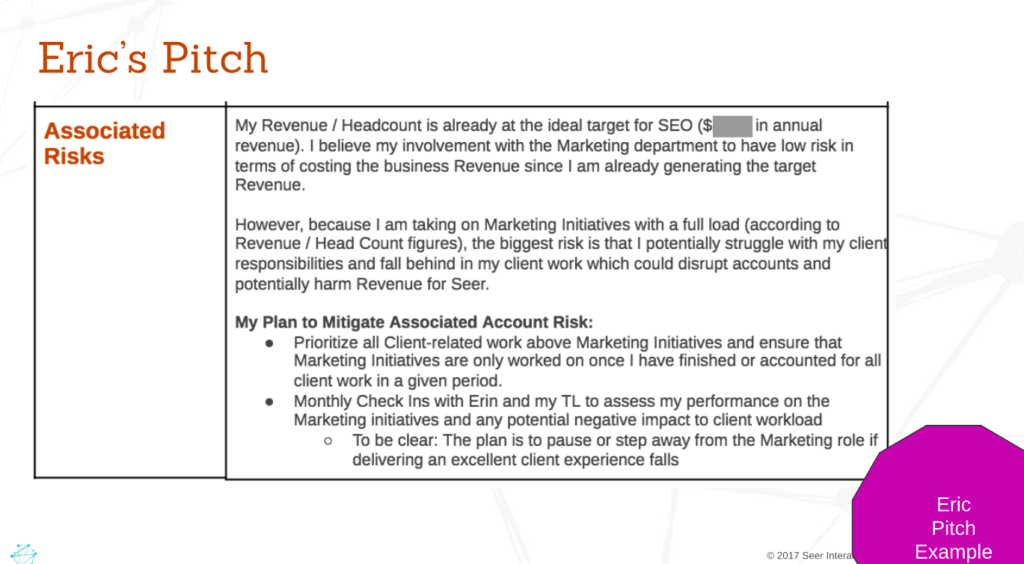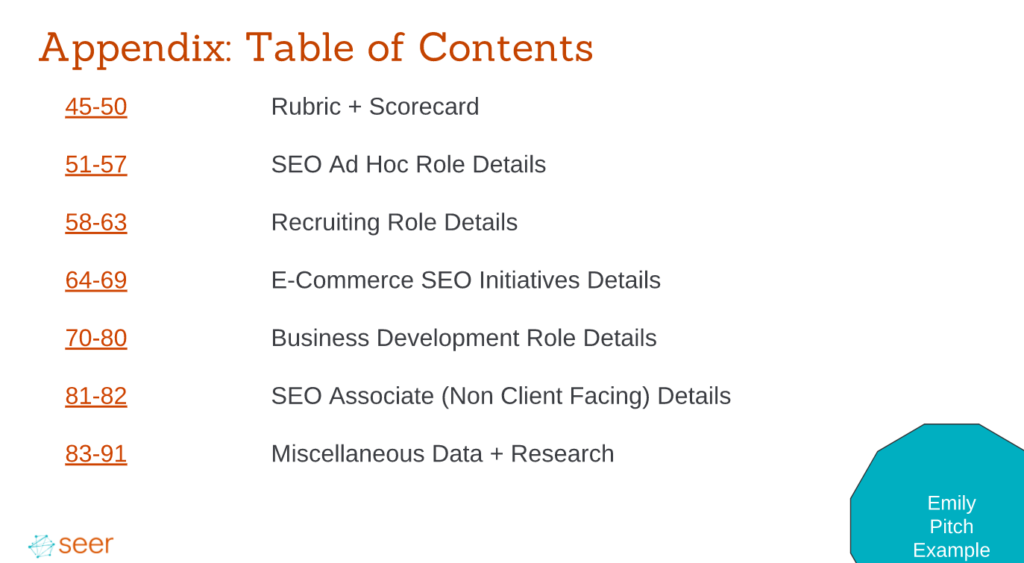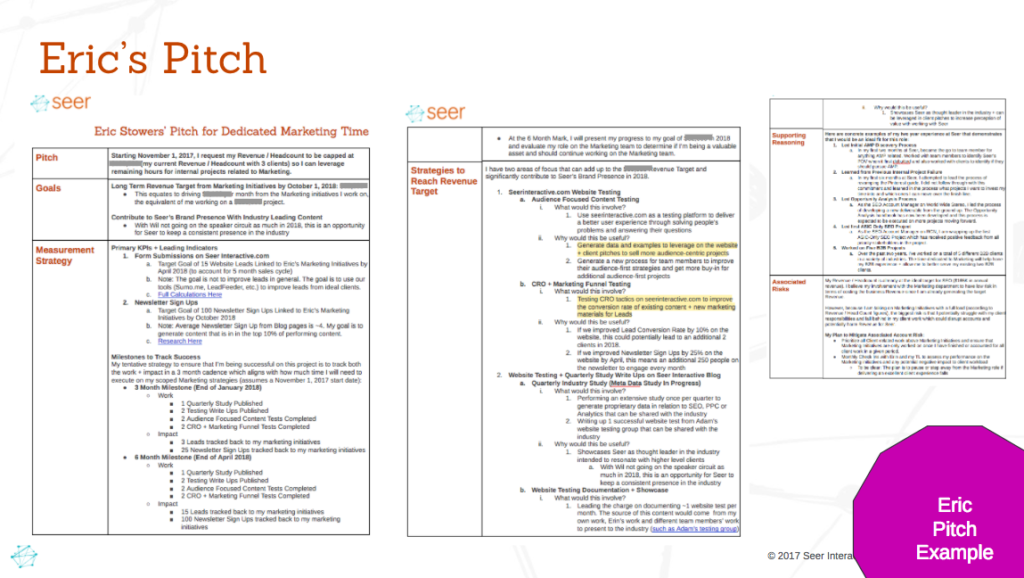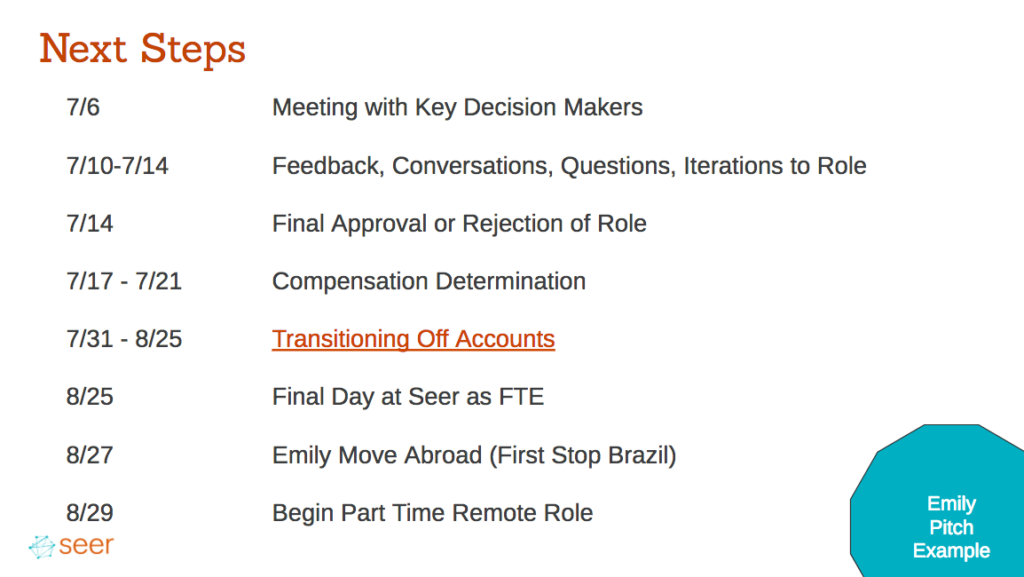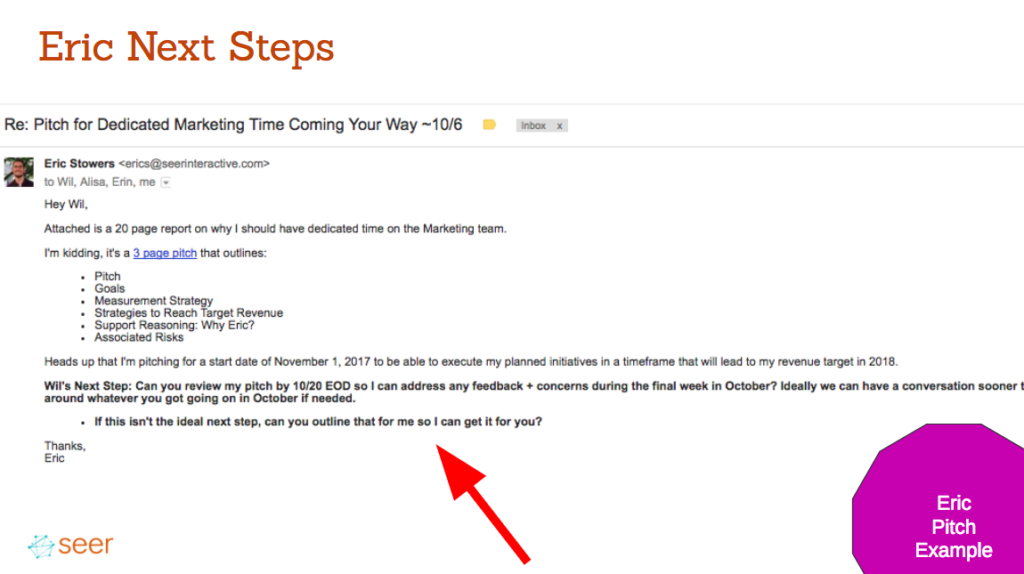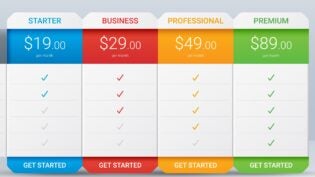
Many curious co-workers and friends have asked me, “How did you manage to convince your company to let you work part-time, anywhere in the world, in a role you built for yourself?” I typically answer it was a combination of hard work and luck—being in the right place, at the right time, with the right people.
This has proved an unsatisfactory answer for many, which has led me to share this guide on how to pitch.
In order to successfully pitch a custom role, nine crucial questions need to be answered.
My goal is to give you the tools you need to empower you to build a pitch that’s best for your unique situation
Before You Begin
Determine
Before answering questions for your decision makers, there are some questions you need to ask yourself that will frame your pitch.
- What do you want?
- What are you not willing to compromise?
In my case, I wanted to be able to work from any time zone, approximately 20 hours a week, in a role that contributed to my career objectives.
Set Yourself Up For Success
How can you set yourself up for success from the beginning of the pitch to ensure that you have the best odds at a positive outcome? There are three key ways:
Set Expectations
Let decision makers know what you’re working on and when they should expect updates. What are the expectations in the role that you’re pitching? Can you execute on these during the pitching process as a case study of the work they will receive if they accept the role?
For example, I knew one of Seer’s greatest concerns was communication when I am not in the office and in many different time zones. I ensured during the three months of the pitch process that I was over communicating, incredibly responsive to emails, and ensuring decision makers felt involved and informed.
Identify Your Allies
Having allies is invaluable during this process. With the questions below, determine who the allies are that you can consult with during this process. They can be both inside or outside your company or a combination of both.
- Who wants you to succeed?
- Who is invested in you enough to make the time to help you through the process?
- Who will give you the most valuable feedback?
Learn who cares and leverage their expertise. You’re stronger as a team than you are alone.
Take Initiative and Hustle
Nobody cares as much as you do. Show that you’re willing to work hard and put in the time. Decision makers can see how much work went into the pitch and you want it to shine.
The 9 Questions All Pitches Need to Answer
These nine questions were formulated based on several of Seer’s team members’ pitches. They are the top considerations that decision makers are looking for. The overarching goal of all these questions is to: Make it as easy as possible to say yes & as challenging as possible to say no.
- What is the need?
- Who does this effect?
- How does this help accomplish set goals?
- What is the plan to accomplish these goals?
- How will it be measured?
- What are the risks?
- How will we overcome or mitigate the risks?
- How can I best present this?
- What are the next steps?
#1. What is the need?
By asking this you will begin to build a foundation of data and research. It gives the lay of the land of what is being worked on and what needs more resources. This should help you determine where to research further and different ways you can integrate within these needs.
- What problems need to be solved?
- What problems are currently being solved?
- What would we accomplish if we put more resources in some areas?
- Where can you contribute your skill sets?
- Where is opportunity arising in the industry? In new technology?
Below is an example of one of the ways I addressed this within my pitch deck and how I began foundational research.
#2. Who does this effect?
To find out how your role affects others, conduct audience research to figure out the concerns and opportunities for those team members. Data collection can include audience interviews (coffee chats), recent blog posts and social media, company research, and established goals.
Audience research leads to increased buy-in. When people are able to express their risks and concerns before the pitch they are more likely to be excited about what you’re working towards and less anxious about change. People want to be heard and know their opinion matters
The key questions to answer in ‘Who does this effect’:
- How much will this cost decision makers?
- Time? Money? Culture?
- What do you need from the team to be successful?
- Do other people need to change for you to be successful?
- How will this benefit the decision makers? Their teams? The company?
How will this benefit or detract from the people you’re working with?
Below are a few examples from mine and Lauren B’s pitch decks, with different approaches to answering the questions.
This slide was the turning point that convinced Wil, our CEO, to accept the pitch.
It outlined all the audience research conducted to understand leadership’s perspective on types of opportunities to evaluate and concerns, risks, and benefits.
This slide was the direct result of the audience interviews and research that was conducted and identified all the success and risk metrics for measuring a role. This research made it easy for the role to be successful.
This is an excellent slide from Lauren’s deck that outlines all the people that need to be involved to make her role a success. The visual and ease of reading add to its strength.
Also, note that she links out to full role information giving decision makers more if they want to explore further.
#3. How does this help accomplish set goals?
In the first two questions, you should have a firm understanding of what your company’s goals are and determine how you want to contribute to them. These next several steps are building the role, what it entails, and how it contributes to goals.
Ask yourself the following to frame your pitch:
- Which goals does your pitch contribute to? One? Multiple?
- What data can you show for how specifically this will contribute to goals?
- What is the opportunity cost of not doing what you’re proposing?
Good goals vs. bad goals
Good goals provide specific data (%, $, etc.) of the contributions that will be made. A good guess backed by data is better than no guess at all.
Bad goals are general. For example, I’ll help bring additional revenue to the company. Okay, but how much? How? Why?
Below are three different examples of how three different Seer team members approached their pitch around goals.
This overview slide outlines five different role possibilities and the opportunity cost of not providing resources to each role.
The opportunity costs lead into goal setting on a “Good, Better, Best” model. This was a concise way to show all of the information in one page.
Another team member recently pitched a dual role in SEO & Marketing. His pitch was concise and fit within three pages.
His goals included the specific revenue he would bring into Seer per month from his marketing initiative.
#4. What is the plan to accomplish these goals?
Challenging yourself to get to the specifics is the most difficult part. This is where the theoretical becomes tangible. You have to push yourself to get to the projected output or make an educated guess with the available data.
The following questions provide a starting point:
- How is this going to work?
- What is the project plan?
- What are the deliverables?
- How much will this cost?
- How much revenue will it bring?
- How many hours per week? Per month? Per Year?
The following examples are snippets from each of our pitches. The full pitch consisted of many slides both within the portion presented and as an additional context within the appendix. The length should be as long as needed to answer the most pertinent questions.
This project plan was created to give a visual of what was to be accomplished in the first phase of the project plan.
This outlined all of the deliverables, what was going to be researched, shared, and developed during this time.
Eric’s pitch stated what was to be accomplished during this time. It included two main projects: website testing and quarterly write-ups around the initiative.
These were further outlined with what it would entail and why it would be useful.
Lauren’s slide here is a high-level overview of the specifics. Inside of her pitch, she elaborates on each of these components and provides additional links to more context.
#5. How will it be measured?
We want to ensure our decision makers know what success looks like and at what points we are reaching or not reaching our goals. The two questions we need to answer this are:
- What are the KPIs?
- On what cadence will we measure?
Eric’s pitch includes specific information on what the goal is and the time frame.
The highlighted portion is where Wil (the decision maker) included feedback based on these numbers.
Lauren’s pitch outlines two business goals and the KPIs associated for each.
These provide a high-level overview, but she has linked another document that includes in-depth information on how this will be accomplished for each goal.
#6. What are the risks?
There are many ways to present these. We can either outline all the risks and then show how we will overcome them, or group them together. At Seer, we’ve had successful pitches do both. The important thing is that the research has been done and we understand the concerns.
- What are team members’ concerns?
- What do you foresee being the biggest challenges?
- What are the different ways in which this could fail?
A rubric was created to assess risk, based on the foreseen challenges and team members’ concerns.
The role was built specifically to mitigate the outlined risks.
#7. How will we overcome or mitigate the risks?
Now that we’ve outlined all of the risks, here is the time to show decision makers that we’ve determined what the risks are and how we can both overcome and mitigate them.
- What are we able to do to mitigate risks?
- What is the plan of action when we experience challenges?
- How will we communicate when there are challenges?
- At what point is the project worth discontinuing?
- Who is able to support us during any challenges?
Eric’s pitch outlines the risks associated with taking on a client role. He simply lays out his plan to mitigate these risks and when the role would be considered failing based on Seer’s priorities.
#8. How can I best present this?
Before you can begin formulating your pitch, you need to do research to understand what is the best format for your decision makers. Pitches can be in different formats from decks and a presentation to a word document with email delivery. This will depend on your pitch and who the decision makers are.
- Who are the decision makers?
- How much information is needed to answer the questions?
- How big is the ask?
- Is there existing information about successful pitches?
- How are decision makers communicating?
- How can I make this as concise as possible?
Tips for Keeping it Concise
Albert Einstein said it best: “Everything should be as simple as possible, but no simpler.” This philosophy should be applied to your pitch.
One tactical way that both myself and other Seer team members have been able to include everything but show only the most pertinent information to decision makers is through a lengthy appendix and linking out to additional information.
In this way, decision makers know that there is supporting information to the claims being made and can dig in deeper where they want additional information.
This was the appendix from my pitch for the part-time, remote role initiative. The appendix was longer than the pitch deck and allowed decision makers to look in depth at the different data and analyses assembled.
Eric’s pitch for dedicated time on the marketing team was able to fit into a three-page word document that answered all of the questions above.
#9. What are the next steps?
To keep the momentum rolling on the pitch and add a sense of urgency for decision makers, you should establish next steps and a timeline. Make it as simple as possible for decision makers to know what is needed from them.
- What needs to happen next?
- What follow up items do you have?
- What do you need from decision makers?
- What is the timeline?
My next steps included a full list and timeline of what needed to be approved and accomplished prior to departure date.
Timelines can change based on leadership feedback, but provide a starting point and framework to work off of.
This email that Eric sent to Wil is a great example of next steps and shows that pitches can be simple.
It also gives the decision maker an opportunity to propose additional next steps based on their thoughts.
You Did It!
Once you have answered these nine questions you should feel confident and ready to present your pitch. Don’t forget to ask your internal advocates for their feedback once it’s complete. From here, take a deep breath, know you’ve done your research, and kick ass!

